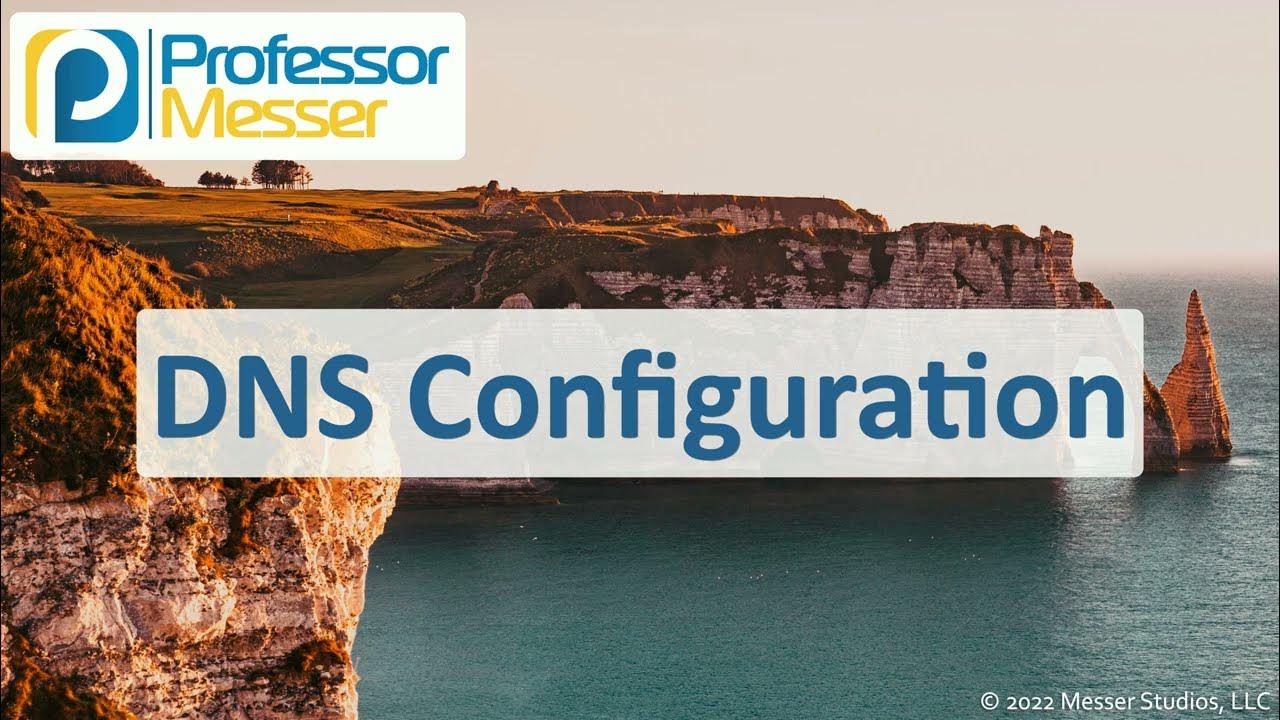DNS Records Explained
Summary
TLDRIn this video, the presenter explains the basics of DNS (Domain Name System) and the specific DNS records found in a server's database. It covers how DNS resolves domain names into IP addresses through a hierarchy of servers, including root, top-level domain, and authoritative name servers. Key DNS records are introduced, such as A, CNAME, MX, SOA, NS, SRV, PTR, and TXT records, with practical examples of how they function. The video also highlights DNS security and its role in email systems and internet safety. The presenter concludes by recommending a partnership with Aura for online privacy protection.
Takeaways
- 😀 DNS (Domain Name System) resolves domain names to IP addresses, as computers only understand numbers, not names.
- 😀 There are three main levels of DNS servers: root servers, top-level domain servers, and authoritative name servers.
- 😀 The authoritative name servers store DNS records, which are essential for resolving domain names to IP addresses.
- 😀 The root server forwards DNS queries to the appropriate top-level domain server based on the domain name's extension (e.g., .com, .org).
- 😀 A DNS zone file contains DNS records, and the most common types of records include A, CNAME, MX, SOA, NS, SRV, PTR, and TXT.
- 😀 The A record (Address Record) resolves domain names to IPv4 addresses (32-bit numeric addresses).
- 😀 The Quad A record resolves domain names to IPv6 addresses (128-bit alphanumeric addresses).
- 😀 CNAME (Canonical Name) records act as aliases, pointing one domain or subdomain to another domain name.
- 😀 MX (Mail Exchanger) records point to the server where emails for a domain should be delivered and include priority levels for email servers.
- 😀 SOA (Start of Authority) records store administrative information about a DNS zone and allow delegation of authority over subdomains.
- 😀 PTR (Pointer) records perform reverse lookups, resolving IP addresses to domain names, and are used for email verification to prevent spam.
Q & A
What is the primary role of DNS?
-The primary role of DNS (Domain Name System) is to resolve domain names to IP addresses, allowing computers to communicate using numerical IP addresses rather than human-readable domain names.
What are the three main levels of DNS servers in the DNS hierarchy?
-The three main levels of DNS servers are: Root Servers, Top-Level Domain Servers (TLD), and Authoritative Name Servers. The authoritative name servers store the DNS records and resolve domain names to IP addresses.
What is a DNS zone file and what does it contain?
-A DNS zone file contains the DNS records for a domain. It stores various types of DNS records, such as A, CNAME, MX, and SOA records, which help manage how the domain is resolved to different services and servers.
What is the difference between an A record and a Quad A record?
-An A record resolves a domain name to an IPv4 address (a 32-bit numeric address), while a Quad A record resolves a domain name to an IPv6 address (a 128-bit alphanumeric address).
How does a CNAME record work?
-A CNAME (Canonical Name) record allows one domain or subdomain to alias another domain. For example, a CNAME record can point www.example.com to example.com, so both URLs lead to the same website.
What is the purpose of an MX (Mail Exchanger) record?
-An MX record specifies the mail server responsible for receiving email for a particular domain. It directs mail transfer agents (MTAs) to the correct server based on the domain's email address.
What is the function of an SOA (Start of Authority) record?
-An SOA record provides administrative information about a DNS zone. It includes details like the primary name server, the email address of the administrator, and a serial number that changes when updates to the zone occur.
What is the difference between an NS (Name Server) record and an A record?
-An NS record specifies the authoritative name server for a domain, indicating where DNS records are stored. An A record, on the other hand, resolves a domain name to an IP address, helping to locate the actual server hosting the website or service.
What is the role of a PTR (Pointer) record in DNS?
-A PTR record is the reverse of an A or Quad A record. It resolves an IP address to a domain name, often used in reverse DNS lookups for email authentication to prevent spam.
How does an SRV (Service) record differ from an A record?
-An SRV record specifies a server and the port number associated with a specific service, such as VoIP or instant messaging. Unlike an A record, which only maps domain names to IP addresses, an SRV record also provides additional service-specific information like the port.
Outlines

هذا القسم متوفر فقط للمشتركين. يرجى الترقية للوصول إلى هذه الميزة.
قم بالترقية الآنMindmap

هذا القسم متوفر فقط للمشتركين. يرجى الترقية للوصول إلى هذه الميزة.
قم بالترقية الآنKeywords

هذا القسم متوفر فقط للمشتركين. يرجى الترقية للوصول إلى هذه الميزة.
قم بالترقية الآنHighlights

هذا القسم متوفر فقط للمشتركين. يرجى الترقية للوصول إلى هذه الميزة.
قم بالترقية الآنTranscripts

هذا القسم متوفر فقط للمشتركين. يرجى الترقية للوصول إلى هذه الميزة.
قم بالترقية الآنتصفح المزيد من مقاطع الفيديو ذات الصلة
5.0 / 5 (0 votes)






